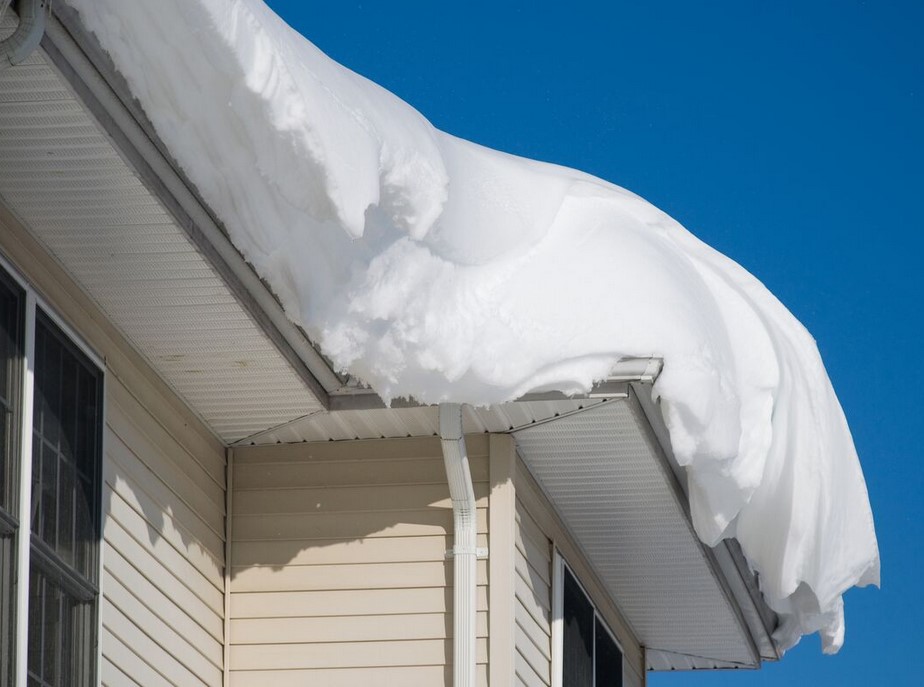
When designing a new commercial structure, you need to consider the snow load on your roof. This is important because the most common failures in the top come from drifted snow.
Calculating the Maximum Weight of snow on Your Roof
If you’re a homeowner in a snowy climate, you need to know how much snow your roof can handle. Using a snow load calculator, you can calculate how much snow your roof can hold. This helps you decide when to shovel the snow or call a service to clear it off.
The amount of weight your roof can hold depends on various factors. Its length, width, and pitch determine your roof’s capacity. Also, you need to consider the type and quality of the snow on your top.
The typical roof will support at least 20 pounds of snow per square foot. This is equivalent to the weight of a compact SUV.
An average-size roof is about 2000 square feet. This means that a well-constructed roof can support 48 inches of new snow. However, you should be careful if your roof is less than this size.
One inch of ice on your roof weighs 5.2 pounds. That’s more than the weight of an entire SUV.
Calculating the Permissible Load
You must know the permissible roof snow load when building a house or other structure. This is an essential factor because it can affect the structural integrity of your building. If the shipment is too heavy, it can cause the roof to collapse. You can use a snow load calculator to determine how much weight your roof can handle.
To calculate the load, you must determine the width and pitch of your roof. Then, you need to multiply the number of inches of snow depth by the weight of the cubic foot.
The permissible roof snow load can vary depending on your area. In addition to calculating the roof snow load measurement, you must also figure out the type of snow you have. Fresh, compacted snow is generally heavier than powdery snow.
Designing a New Commercial Structure
The design and construction of a new commercial structure is a complicated business. It pays to enlist the services of a licensed structural engineer to make sure that the product you buy is built to last. A qualified professional will have the requisite knowledge and equipment to ensure the project is successful. In short, a well-designed and constructed building is a great place to work and live. Keeping it free from leaks, rot, and other undesirable hazards is no small feat.
A proper building design will not only minimize the costs of maintenance but will also avoid the need for replacement if the worst does happen. To that end, a good building design will also consider the weather and conditions of the surrounding environment. Moreover, a savvy architect will also look to the stars to determine the best time of year to install the latest and greatest roof coverings. As a bonus, a professionally installed roof awning will also aid in the prevention of avalanches.
Drifted Snow Causes Most Snow-related Failures on Roofs
Drifted snow is one of the most common causes of roof failures. It accounts for three-quarters of the structural losses associated with snow. Roof failures can be costly and dangerous for buildings and their occupants. Fortunately, the effects of drifting can be mitigated, so the structure of a building can survive.
Drifted snow is formed when snow is moved by wind and deposits against an obstruction, such as a building’s roof. These deposits often accumulate near the edges of the building, particularly in areas with sheltered or protected areas. When drifts are large, they can compromise the structure’s structural integrity.
The drifted snow load on a sloped roof is usually two times the flat roof snow load. It is calculated by converting the depth of the snowpack to a weight using a formula. This weight is then multiplied by the height of the drifts.
Structural members on a flat roof can deflect between 2″ and 3″. Snow can be deposited next to an obstruction. However, it can also be sublimated, which releases heat from the snow and causes it to melt. Therefore, it is essential to account for these factors in building design.
